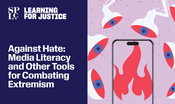Selma, Alabama: Honoring the Past and Fighting for the Future
As we mark the 58th anniversary of the Selma to Montgomery march and witness the current assault on voting rights, particularly those rights of Black citizens, it’s imperative to connect the not-so-distant past to the present. These LFJ resources—including an interactive digital platform created in conjunction with the Hutchins Center for African & African American Research—can help remind us all of the sacrifices made in the name of democracy, provide context for the present, and inspire our continuing fight for justice.
- ‘Selma Online’: Young People Impact the Vote
- President Obama's Address on the 50th Anniversary of Bloody Sunday
- Expanding Democracy Through Intersecting Movements



